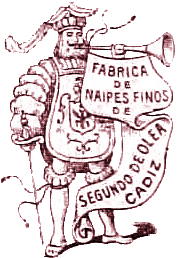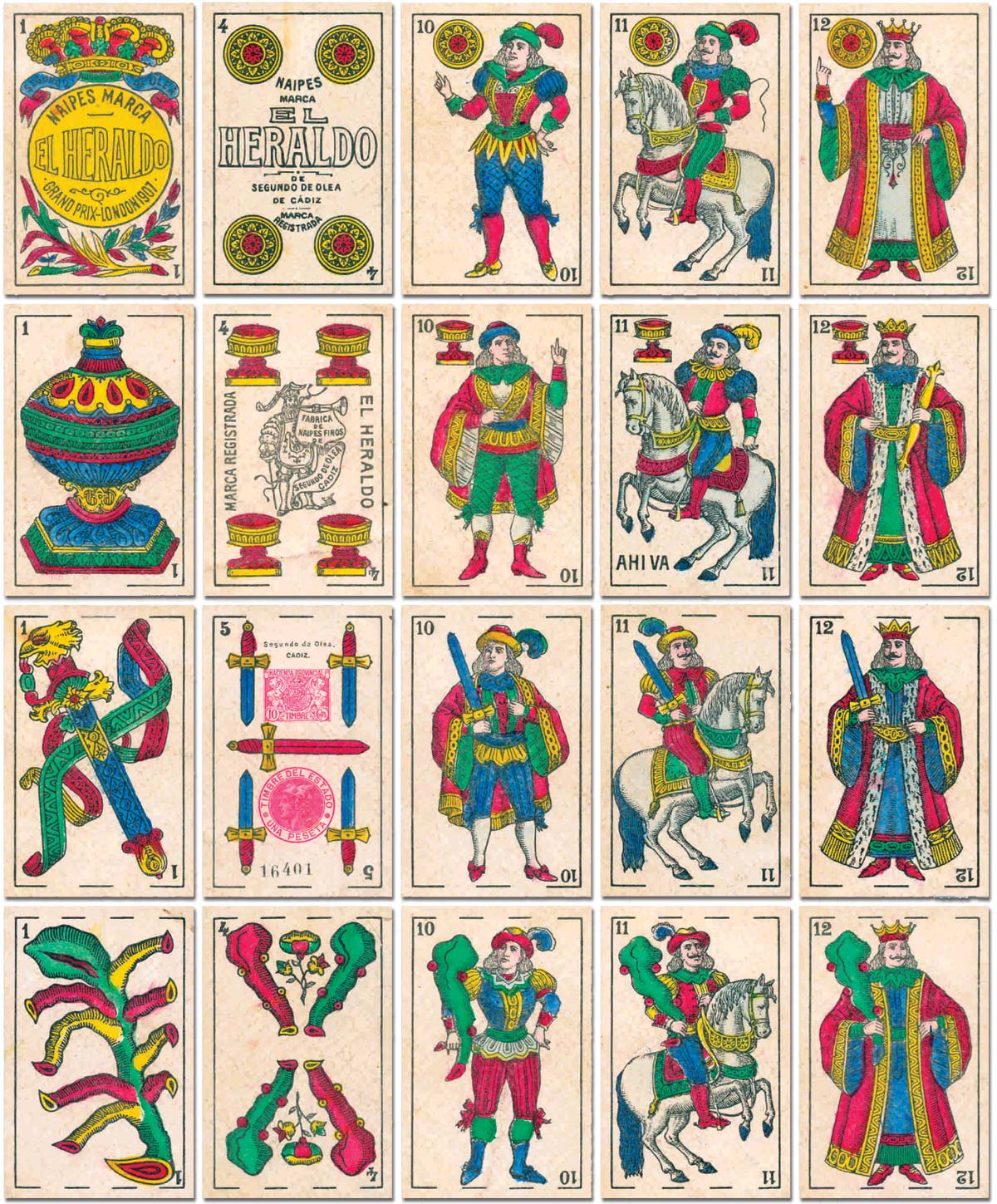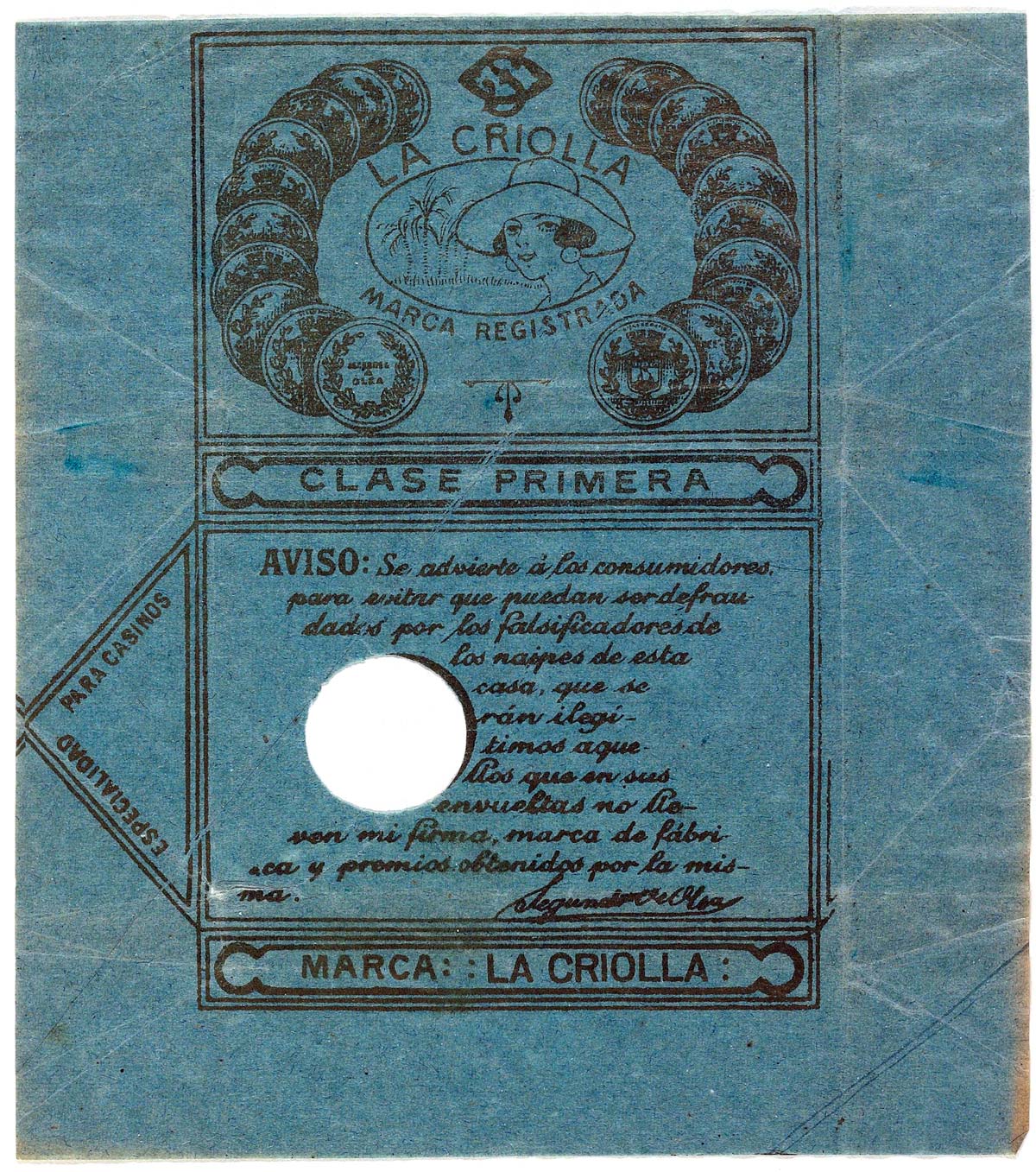Naipes El Heraldo, Cádiz
“El Heraldo” brand by Segundo de Olea Aguilera, Cadiz.

Naipes El Heraldo, Segundo de Olea, Cádiz
The firm was acquired by Heraclio Fournier in 1940, who continued to produce the “El Heraldo” brand for some time. The designs inspired several foreign manufacturers, including Vigor S.R.L of Buenos Aires and their successors Gráfica 2001 / Naipes La Española►
Earlier editions of this deck were virtually identical to “Los Dos Tigres” brand by González Risso, but later on the two manufacturers differentiated their products more noticeably.

Above: final version of the “El Heraldo” brand by Segundo de Olea Aguilera, c.1925. The five of swords has a one peseta tax stamp and also a 10 céntimos local surcharge. Images and notes courtesy Alberto Pérez González.


Above: Cadiz pattern by Segundo de Olea, with registered trade mark on four of cups, small index numbers, hand-coloured lithograph, dated 1897. © The Trustees of the British Museum, number 1904,0511.46.1-48►
REFERENCES
Pérez González, Alberto: Los Naipes de Cádiz, in LA SOTA no.13, Asescoin, Madrid, October 1995

Above: wrapper from La Criolla brand by Segundo de Olea, c.1920

By Simon Wintle
Member since February 01, 1996
I am the founder of The World of Playing Cards (est. 1996), a website dedicated to the history, artistry and cultural significance of playing cards and tarot. Over the years I have researched various areas of the subject, acquired and traded collections and contributed as a committee member of the IPCS and graphics editor of The Playing-Card journal. Having lived in Chile, England, Wales, and now Spain, these experiences have shaped my work and passion for playing cards. Amongst my achievements is producing a limited-edition replica of a 17th-century English pack using woodblocks and stencils—a labour of love. Today, the World of Playing Cards is a global collaborative project, with my son Adam serving as the technical driving force behind its development. His innovative efforts have helped shape the site into the thriving hub it is today. You are warmly invited to become a contributor and share your enthusiasm.
Related Articles

Pierre Varangot
Tracing the origins, legality and legacy of Pierre Varangot’s San Sebastián deck.

Archaic Spanish-suited pattern from Bayonne
Archaic Franco-Spanish pattern from Bayonne by a manufacturer with the initals M.V.

Tarot de las Coscojas
Historical playing card design, tarot symbolism and an almost psychedelic medieval surrealism.

Tarot de Valverde de la Vera
A series of 24 surrealist engravings by Mexican artist Claudio Favier in which archetypal Tarot alle...

Baraja de Juan Martín Zamorano
Deck inspired by El Pendón de los Zamorano, a military pennant dating from 1501, published by Priego...

Heráldica Castanyer No. 16
Strange variant of international pattern cards for poker or bridge.

Fantasy Spanish-suited deck
Fantasy Spanish-suited deck by Bertschinger y Codina, Barcelona.

Bertschinger y Codina - Cartes Françaises
French ‘Paris’ pattern made by Bertschinger y Codina, Barcelona, c.1850.

Braulio Fournier
Baraja Nº 1 produced by Braulio Fournier, Burgos, c.1868.

Pirritx eta Porrotx
Happy Families card game from the Spanish Basque Country.

Naipe Vizcaino
‘Naipe Vizcaino’ designed by Javier Urkiri and published by Industrias Gráficas Castuera and the Caj...

Baraja Turística del País Vasco
Basque poker deck of 55 cards published by Fournier with scenic views of the Basque Country.

Baraja Vasca
Spanish Basque Country deck with original drawings by María Isabel Ibañez de Sendadiano.

Baraja Cultura Española
ASESCOIN pack for 2022 designed by M.A. Corella featuring famous Spaniards and notable buildings.

Laurenzo Propagine
Spanish-suited cards made in Italy by Laurenzo Propagine.

Jeu de 7 familles Les Dynasties d’Artisans Basques
Long-standing Basque businesses represented in a traditional card game with illustrations by Odile A...
Most Popular
Our top articles from the past 28 days

